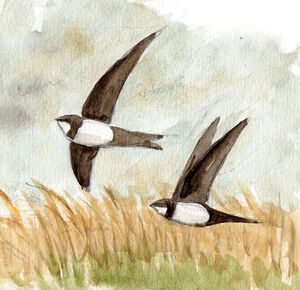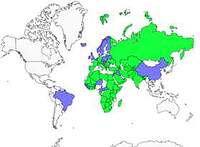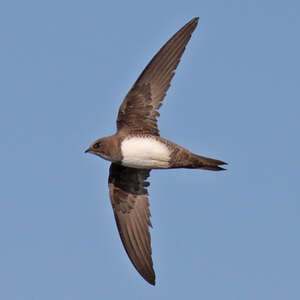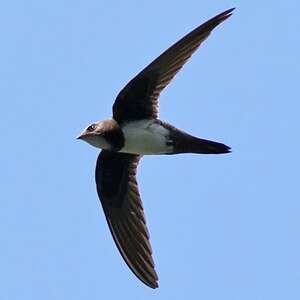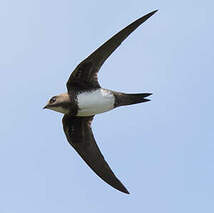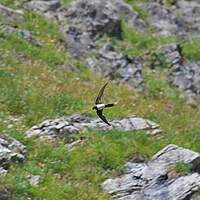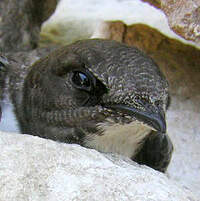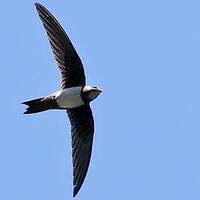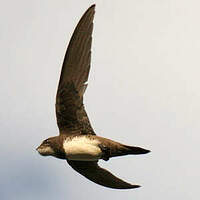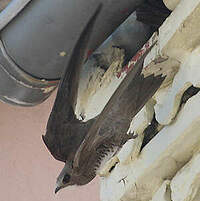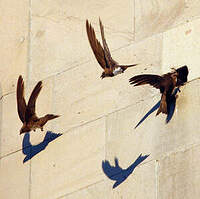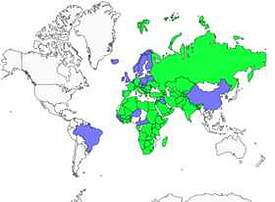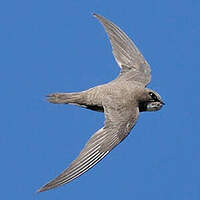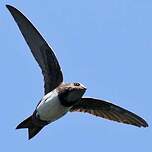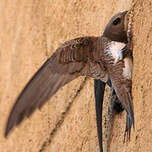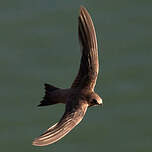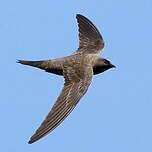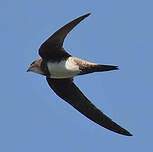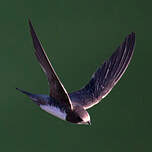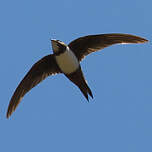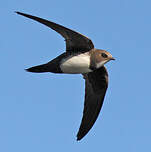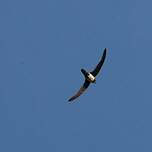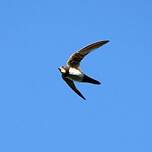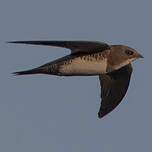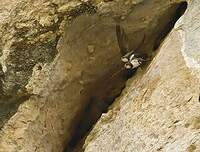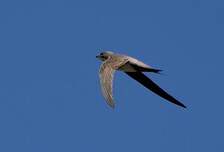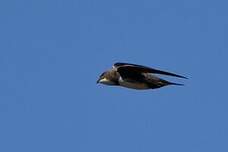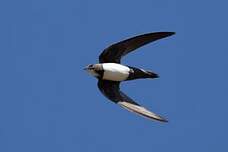Alpine Swift
Tachymarptis melba - Martinet à ventre blanc
Identification
Subspecific information 10 subspecies
- Tachymarptis melba melba (s Europe through Turkey to nw Iran)
- Tachymarptis melba tuneti (Morocco through the Middle East and e to w Pakistan)
- Tachymarptis melba archeri (n Somalia, sw Arabia to Jordan and Israel)
- Tachymarptis melba maximus (Rwenzori Mts.. ne DRCongo, Uganda.)
- Tachymarptis melba africanus (Ethiopia to South Africa and sw Angola)
- Tachymarptis melba marjoriae (nc Namibia, nw South Africa)
- Tachymarptis melba willsi (Madagascar)
- Tachymarptis melba nubifugus (Himalayas)
- Tachymarptis melba dorabtatai (w India)
- Tachymarptis melba bakeri (Sri Lanka)
Foreign names
- Martinet à ventre blanc,
- Vencejo real,
- andorinhão-real,
- Alpensegler,
- havasi sarlósfecske,
- Alpengierzwaluw,
- Rondone maggiore,
- alpseglare,
- Alpeseiler,
- dážďovník skalný,
- rorýs velký,
- Alpesejler,
- alppikiitäjä,
- Witpenswindswael,
- ballester comú,
- Alpasvölungur,
- jerzyk alpejski,
- Alpu svīre,
- planinski hudournik,
- Белобрюхий стриж,
- シロハラアマツバメ,
- 高山雨燕,
- 高山雨燕,
Voice song and cries
Habitat
Behaviour character trait
Flight
Dietfeeding habits
Reproduction nesting
The Alpine Swift chooses, for its colonies, natural sites consisting of crevices in vertical rock faces, although sporadically one observes nestings in the structures of urban edifices.
Between one and five eggs are laid in the early month of May onto a lining of materials such as feathers, straw and textile threads. After a 21-day incubation period, the young are fed by balls of insects captured in-flight by the parents, until the flight which takes place in July, eight to nine weeks later depending on the weather conditions, thus the yield of the hunt.Geographic range
This Alpine Swift is only present in the southern part of Europe: Spain and Pyrenees, Mediterranean coast, Massif Central, Alps (up to Jura), Italy, Corsica and Sardinia, Greece, Balkans, Turkey.
Threats - protection
IUCN conservation status
Extinct
Threatened
Least
concern
concern
Extinc
in the Wild
in the Wild
Near
threatened
threatened
Not
evaluated
evaluated
EX
EW
CR
EN
VU
NT
LC
NE
Sources of information
- IOC World Bird List (v14.1), Gill, F and D Donsker (Eds). 2024-04-18.
- Les Oiseaux d'Europe, d'Afrique du Nord et du Moyen-Orient, Lars Jonsson
- Les passereaux d'Europe, tome 1, P. Géroudet, M. Cuisin
- Les oiseaux d'Europe (plaines, montagnes, forêts), SAUER Frieder
Other sources of interest
 Specification sheet created on
02/08/2023 by Renan Levaillant
Specification sheet created on
02/08/2023 by Renan LevaillantTranslation by AI Oiseaux.net
published: 23-08-2011 - Updated: 28-09-2011
© 1996-2024 Oiseaux.net
- Accipitriformes
- Aegotheliformes
- Anseriformes
- Apodiformes
- Apterygiformes
- Bucerotiformes
- Caprimulgiformes
- Cariamiformes
- Casuariiformes
- Charadriiformes
- Ciconiiformes
- Coliiformes
- Columbiformes
- Coraciiformes
- Cuculiformes
- Eurypygiformes
- Falconiformes
- Galliformes
- Gaviiformes
- Gruiformes
- Leptosomiformes
- Mesitornithiformes
- Musophagiformes
- Nyctibiiformes
- Opisthocomiformes
- Otidiformes
- Passeriformes
- Pelecaniformes
- Phaethontiformes
- Phoenicopteriformes
- Piciformes
- Podargiformes
- Podicipediformes
- Procellariiformes
- Psittaciformes
- Pterocliformes
- Rheiformes
- Sphenisciformes
- Steatornithiformes
- Strigiformes
- Struthioniformes
- Suliformes
- Tinamiformes
- Trogoniformes

